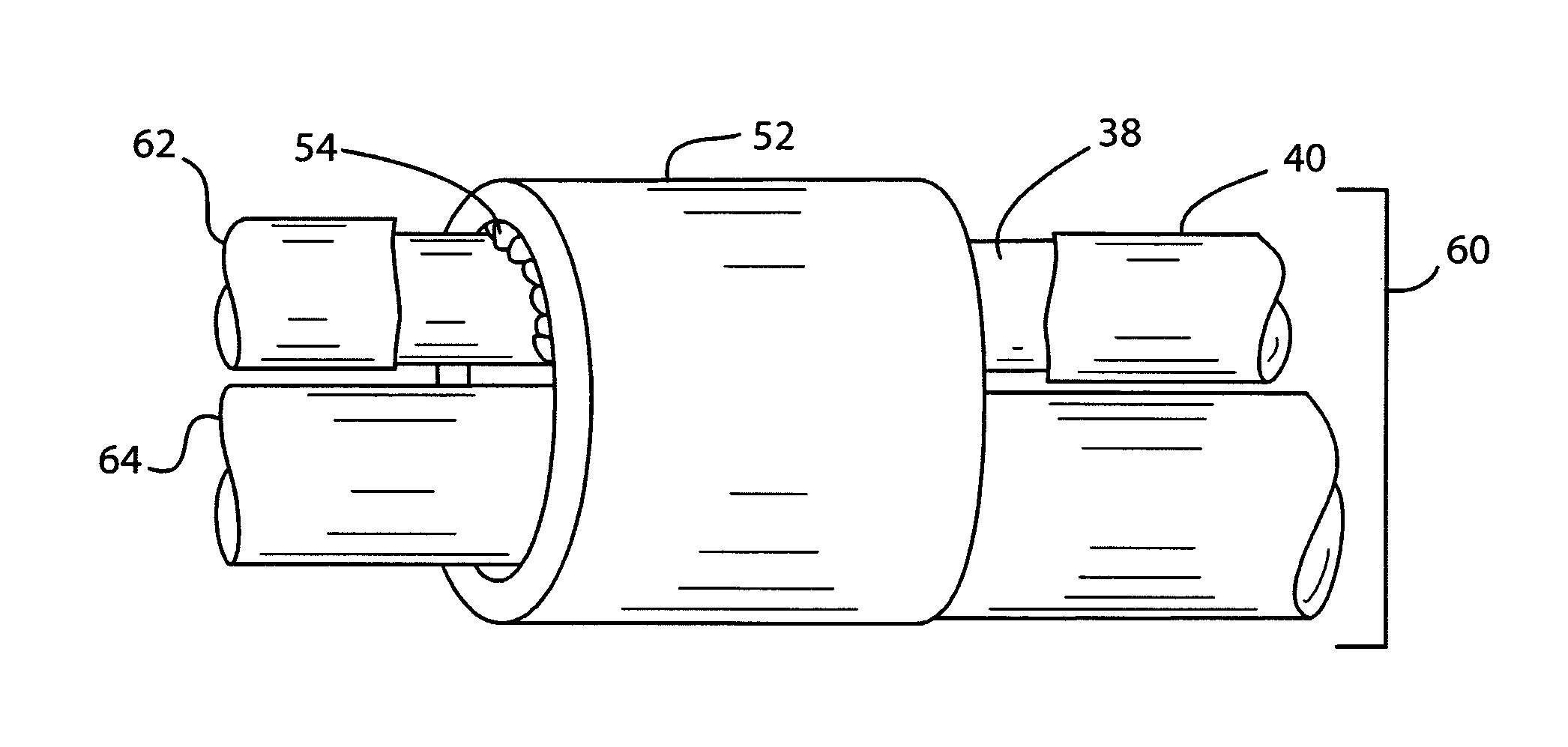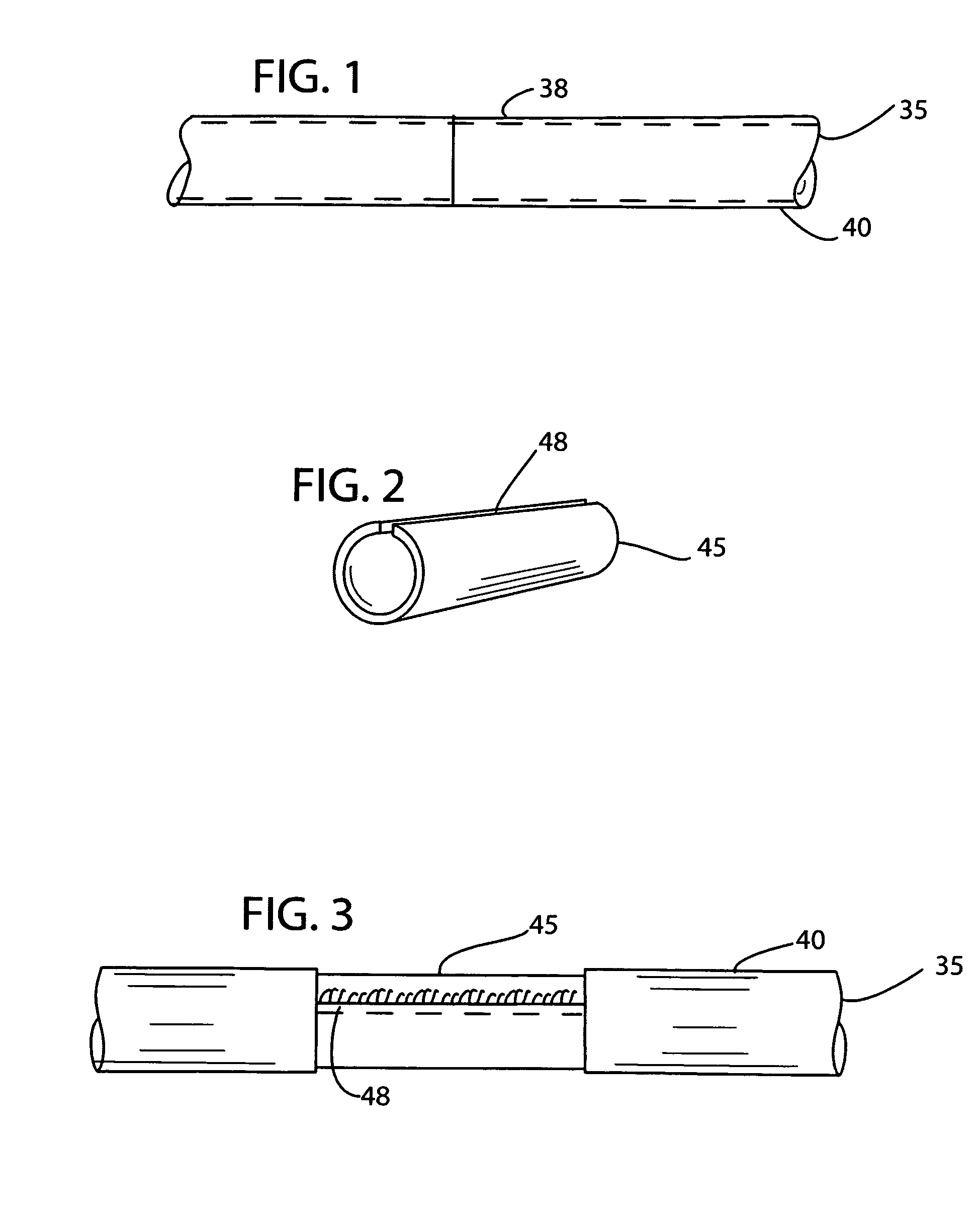Electrode and connector attachments for a cylindrical glass fiber wire lead
a glass fiber wire and cylindrical technology, applied in the direction of spinal electrodes, cable junctions, cable terminations, etc., to achieve excellent electrical conductivity, and reduce the thickness of the metal coating
- Summary
- Abstract
- Description
- Claims
- Application Information
AI Technical Summary
Benefits of technology
Problems solved by technology
Method used
Image
Examples
Embodiment Construction
[0055]The invention encompasses attachment of proximal electrically conductive connectors and distal electrodes on all implanted fine wire leads, but is illustrated in the context of a cardiac pulsing device. Typically, a pacemaker is implanted just under the skin and on the left side of the chest, near the shoulder. The heart is protected beneath the ribs, and the pacemaker leads follow a somewhat tortuous path from the pacemaker under the clavicle and along the ribs down to the heart.
[0056]FIG. 1 represents a schematic drawing of a fine wire lead 35 with protective outer polymer coating 40 removed from a portion of the lead, revealing a conductive metal buffer 38 of thickness up to 8000 Angstroms, affixed to an underlying drawn glass fiber core. The exposed conductive metal buffer provides for electrical connection with connectors or electrodes. The length of the exposed conductive metal buffer is variable, dependent on the type of connection made with connectors or electrodes.
[00...
PUM
 Login to View More
Login to View More Abstract
Description
Claims
Application Information
 Login to View More
Login to View More - R&D
- Intellectual Property
- Life Sciences
- Materials
- Tech Scout
- Unparalleled Data Quality
- Higher Quality Content
- 60% Fewer Hallucinations
Browse by: Latest US Patents, China's latest patents, Technical Efficacy Thesaurus, Application Domain, Technology Topic, Popular Technical Reports.
© 2025 PatSnap. All rights reserved.Legal|Privacy policy|Modern Slavery Act Transparency Statement|Sitemap|About US| Contact US: help@patsnap.com



